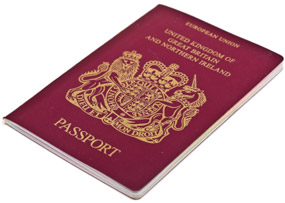
From 6 April 2012, individuals needing to know if they are UK resident for tax purposes might be able to take a Statutory Residence Test, recently proposed by the Government.
The proposed test is divided into three categories – One, Two and Three.
Part one is used to determine if you are resident anywhere outside of the UK. If this cannot be proved, then part two is used which determines if you are resident in the UK. If neither category proves residency, then individuals are tested in part three, which determines an individual’s residency by connecting factors to the UK.
So what counts as a ‘day of presence in the UK’?
If you are in the UK at midnight at the end of a day, then that counts as a ‘day of presence’, unless you are passing through the UK in transit.
The test
PART ONE (NON-RESIDENT):
You will be non-resident in a tax year if you were either:
- Resident in the UK in all of the previous three tax years, and are present in the UK for fewer than 45 days in the current tax year (defined as an ‘arriver’); or
- Resident in the UK in one or more of the previous three tax years, and present in the UK for fewer than 10 days in the current tax year (defined as a ‘leaver’); or
- You left the UK to carry-out full time work abroad, so long as you are present in the UK for fewer than 90 days in the tax year and less than 20 days are spent working in the UK in the tax year.
PART TWO (RESIDENT)
You are resident in a tax year if you were either:
- Present for 183 days or more in the tax year; or
- Have only one home or more, which are in the UK; or
- Work full time in the UK.
If a condition in both part one and two are met, then part one will prevail and you will be classed as non-resident for tax purposes.
If part one or two do not determine residency, then part three will be used as a deciding factor. It takes into account connections in the UK and compares them with the number of days spent in the UK.
PART THREE (CONNECTIONS)
The various “connection factors” are as follows:
- Family – Spouse, civil partner or common law equivalent or minor children are in the UK.
- Accommodation – Property that is accessible as a place of residence and is used by you or your family during the tax year.
- Work – Substantive work defined as 40 days or more in the tax year where at least three hours a day are worked.
- UK presence in a previous year – If you spent 90 days or more in either of the two previous tax years.
- More days here than in any other country during the tax year.
For an ‘arriver’ – (someone not resident in the UK for the previous three tax years) the test will work as follows:
- Fewer than 45 days in the UK means you will always be non-resident.
- 45-89 days, you will be resident if four or more part three factors apply.
- 90-119 days, you will be resident if three or more part three factors apply.
- 120-182 days, you will be resident if two or more part three factors apply
- 183 days or more, you will always be resident.
For a ‘leaver’ – (some resident in the UK in one more of the previous three tax years) the test will work as follows:
- Fewer than 10 days in the UK means you will always be non-resident
- 10-44 days you will be resident if four or more part three factors apply.
- 45-89 days, you will be resident if three or more part three factors apply.
- 90-119 days, you will be resident if two or more part three factors apply.
- 120-182 days, you will be resident if one or more factors apply.
- 183 days or more, you will always be resident in the UK.
The test comes as a relief for many by simplifying the factors that deem residence and providing more clarity for individuals. One very positive outcome of this test will be lifestyle and social ties. If you plan to leave the UK you will not have to close UK bank accounts or withdraw from UK-based clubs and societies. Equally, those coming to the UK will be able to join social clubs and such without being deemed resident on these social ties alone.
Contact us for further details:
Phone: 020 7354 3914
Email
No comments yet.